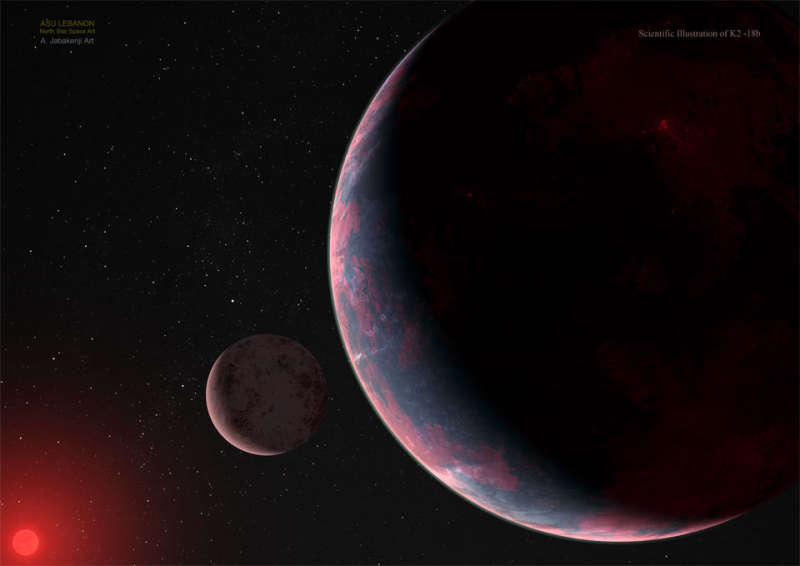
|
APOD: 2023 September 20 Á Methane Discovered on Distant Exoplanet

Explanation:
Where else might life exist?
One of humanity's
great outstanding questions,
locating planets where extrasolar life might survive took a
step forward in 2019 with the discovery of a significant amount
of water vapor in the atmosphere of distant exoplanet
K2-18b.
The planet and its parent star,
K2-18,
lie about 124 light years away toward the constellation of the
Lion
(Leo).
The
exoplanet is significantly
larger and more massive than our Earth, but orbits in the
habitable zone of its home star.
K2-18, although more red than our Sun, shines in
K2-18b's
sky with a brightness similar to the
Sun in Earth's sky.
The 2019
discovery
of atmospheric water
was made in data from three space telescopes:
Hubble,
Spitzer,
and
Kepler, by noting the absorption of water-vapor colors when the
planet
moved in front of the star.
Now in 2023,
further observations by the
Webb Space Telescope in
infrared light
have uncovered evidence of other life-indicating molecules -- including
methane.
The featured illustration imagines exoplanet
K2-18b
on the far right orbited by a moon (center),
which together orbit a
red dwarf star
depicted on the lower left.
| << Yesterday | 20.09.2023 | Tomorrow >> |

|
January February March April May June July August September October November December |
| ||||||||||||||||||||||||||||||||||||||||||||||||
NASA Web Site Statements, Warnings, and Disclaimers
NASA Official: Jay Norris. Specific rights apply.
A service of: LHEA at NASA / GSFC
& Michigan Tech. U.
Based on Astronomy Picture
Of the Day
Publications with keywords: extrasolar planet
Publications with words: extrasolar planet
See also:
- APOD: 2025 September 8 Á IRAS 04302: Butterfly Disk Planet Formation
- APOD: 2024 July 8 Á Exoplanet Zoo: Other Stars
- Temperatures on Exoplanet WASP 43b
- Epsilon Tauri: Star with Planet
- APOD: 2023 October 17 Á PDS 70: Disk, Planets, and Moons
- APOD: 2023 June 6 Á Star Eats Planet
- APOD: 2023 February 1 Á The Seventh World of Trappist 1